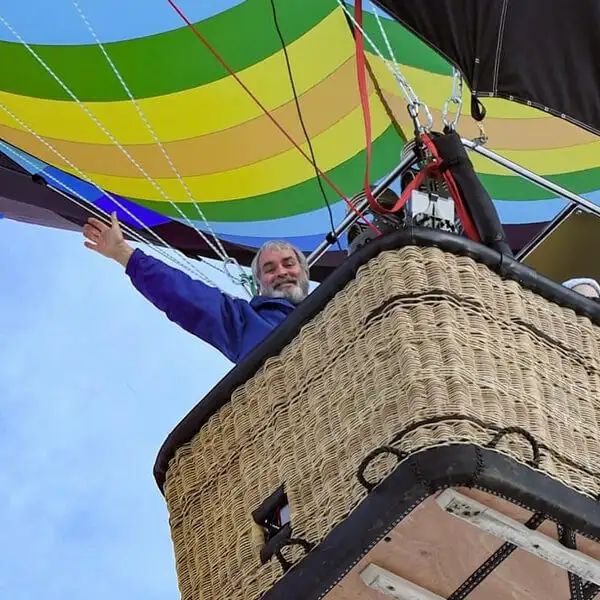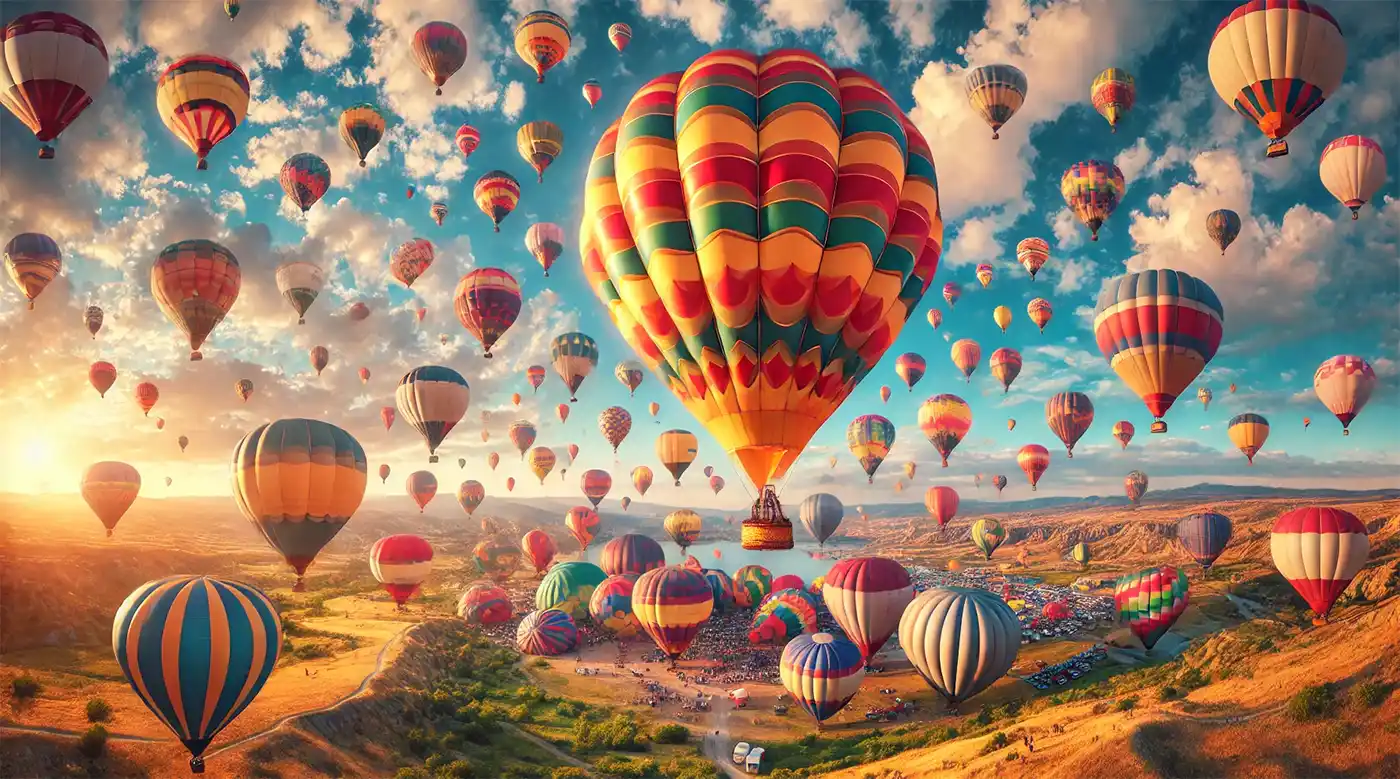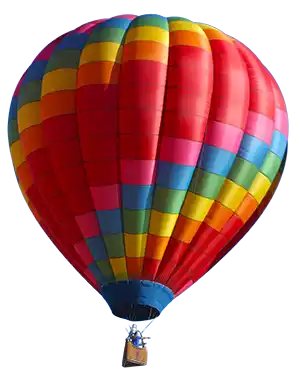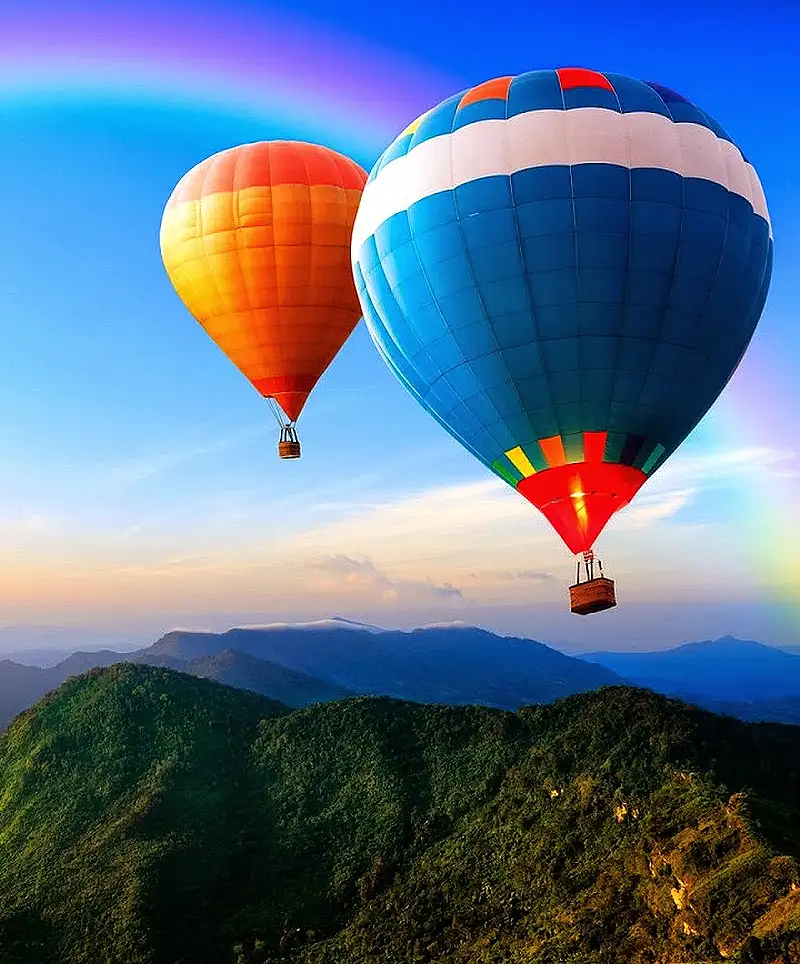National Balloon Ascension Day, observed annually on January 9th, is not just any ordinary day – it's the day when the sky becomes less of a blue canvas and more of a stage for the age-old art of hot air ballooning. Today, we commemorate the first manned hot air balloon flight in the United States, which bravely left the ground back in 1793. Since then, this day has inflated in significance, much like the balloons themselves, becoming a celebration for those who prefer their feet off the ground and their heads in the clouds.
This day brings us a gentle reminder of humanity's enduring love affair with floating aimlessly in a wicker basket. It's a day where gravity takes a back seat, and the laws of buoyancy take the wheel. Enthusiasts, who spend most of their year grounded, seize this opportunity to ascend skywards while spectators on terra firma crane their necks, marveling at the buoyant spectacle. Balloons of all shapes, sizes, and colors dot the horizon, offering a kaleidoscopic view that often leaves onlookers wondering if they've accidentally stumbled into a children's storybook.
But National Balloon Ascension Day is more than just a visual treat. It's a nod to the adventurous spirit, to the dreamers who looked at a teakettle and thought, "Yes, I can ride that steam to the heavens." It's a day that celebrates not only the history of ballooning but also the quirky, delightful community that has grown around it – a community that believes that the best way to see the world is from a few hundred feet up, with a picnic basket and a perhaps questionable sense of adventure.
So, on January 9th, whether you're a ballooning enthusiast ready to take flight or a grounded spectator with a penchant for skyward wonders, National Balloon Ascension Day invites you to look up and admire the whimsical dance of balloons against the vast, blue expanse, and maybe, just for a moment, wish you were up there, sipping champagne at the mercy of the wind.
 The Ups and Downs of Ballooning
The Ups and Downs of Ballooning
The story of hot air ballooning is a fascinating tapestry woven with threads of history, daring adventures, and a fair share of "What on earth were they thinking?" moments. This narrative begins long before National Balloon Ascension Day was marked in our calendars, taking us back to an era when flight was a fanciful dream rather than a reality.
The first successful manned flight in a hot air balloon, crafted by the Montgolfier brothers, happened in France in 1783. This groundbreaking event was akin to a scientific miracle, where two brothers figured out that if you heat air, it lifts a silk bag skywards. It's likely that this discovery was accompanied by a mix of ecstatic cheers and baffled gasps, with a sprinkling of "But how do you steer this thing?" questions.
Fast forward to January 9, 1793, a date now earmarked for National Balloon Ascension Day, when Jean Pierre Blanchard, a French balloonist, decided to take a skyward jaunt in the United States. His hydrogen-filled balloon lifted off from a prison yard in Philadelphia, Pennsylvania, watched by none other than President George Washington, along with a crowd of curious onlookers. This historical ascent marked the first aerial voyage in the New World, paving the way for future aviators and balloon enthusiasts. It's no wonder that we celebrate this day; it's a nod to the moment when America first touched the skies in a balloon, perhaps proving that even in the 18th century, people were willing to try anything once, especially if it meant floating into the sky like a very patriotic bird.
The development of hot air ballooning from these early, somewhat reckless days to the modern era is a story of technological advancements, daring feats, and a surprising amount of physics. Ballooning has come a long way from the days of the Montgolfier brothers and Jean Pierre Blanchard. Early balloonists were more akin to daredevils than pilots, with little control over direction and an alarming disregard for safety. It wasn't uncommon for these flights to end in unintended destinations or for balloonists to find themselves in precarious situations – often leading to stories that mixed equal parts admiration and head-shaking.
Today, hot air ballooning is a blend of tradition and technology. Modern balloons are equipped with state-of-the-art materials, GPS systems, and sophisticated weather forecasting tools, yet they still rely on the simple principle of hot air rising in a cooler atmosphere. This blend of old and new makes each balloon flight a unique juxtaposition between 18th-century romanticism and 21st-century precision.
The ups and downs of ballooning are not just about altitude. They represent the ebb and flow of human ingenuity, the dance between risk and discovery, and a relentless pursuit of seeing the world from a perspective that ground-bound folks can only dream of. National Balloon Ascension Day is thus a celebration of this incredible journey, from the first flicker of flame beneath a balloon to the modern spectacle of colorful orbs gracefully navigating the morning sky.

Not Just Full of Hot Air
Modern hot air ballooning is not just an exercise in nostalgia. It's a blend of science, adventure, and the undeniable human urge to change our Facebook profile pictures to something really cool. Pilots are not just people who forgot to let go of the balloon string; they are skilled aviators who understand meteorology, physics, and the importance of a good breakfast before spending hours in a wicker basket.
National Balloon Ascension Day is celebrated in various ways, but the most visually stunning is at balloon festivals. These festivals are not just about balloons; they are about community, food, music, and sometimes wondering if that balloon shaped like a giant cow is some kind of commentary on modern society. One of the most famous events is the Albuquerque International Balloon Fiesta in New Mexico, where the sky becomes a canvas for hundreds of balloons, painting a picture that looks like a Pixar movie on steroids.

What's it like to ride in a hot air balloon? It's like being on a floating picnic that defies gravity. The experience is serene, with the exception of the occasional blast from the burner, which reminds you that you are, in effect, riding a giant controlled explosion. The view, needless to say, is breathtaking – literally if you're scared of heights.
The Quirky Side of Ballooning
Ballooning has its quirks. Pilots have a tradition of toasting with champagne after landing – a tradition that dates back to early French balloonists who found that a bottle of bubbly helped calm angry or confused landowners when they landed in their fields. Then there's "The Balloonist's Prayer," which asks for gentle winds and soft landings, proving that even balloonists know it's wise to have a few words with the man upstairs before taking off.
National Balloon Ascension Day is more than just a day to watch balloons; it's a day to celebrate human ingenuity, the beauty of our skies, and maybe, just maybe, to imagine what it would be like to drift away on a gentle breeze, leaving all our cares on the ground. So next time you see a hot air balloon, remember it's not just a pretty sight; it demonstrates human curiosity and the endless quest for adventure and new profile pics.
Please Share our Content






 The Ups and Downs of Ballooning
The Ups and Downs of Ballooning










 "Sláinte!" is a traditional Irish expression used as a toast, equivalent to "Cheers!" in English.
"Sláinte!" is a traditional Irish expression used as a toast, equivalent to "Cheers!" in English.